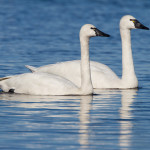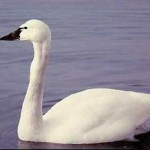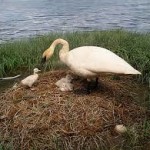 On Sat., Dec. 17th join the Duncannon Outdoor Club (DOC) at Pine Grove Furnace State Park for a 7 mile, average paced, loop hike on moderate terrain to Pole Steeple. This hike will include one climb that rises 500 ft. for three-quarters of a mile. If there is snow on the mountain tops wear micro spikes or Yak Traks if you have them. We will be learning about Lyme Disease and how to prevent it. Meet 8:30 am. at the Duncannon Holy Spirit Center, a Geisinger Affiliate (formally the Duncannon Family Health Center) to carpool or alternately meet at the K Mart in Enola at 9:00 am. Pack a lunch and don’t forget fluids. Wear something orange for the hunting season. Please reimburse drivers 10 cents a mile. Total miles = 52 miles from K Mart and back. Call Deb at 395-2462 or email dtakach@duncannonatc.org to register. Hope you can make it!
On Sat., Dec. 17th join the Duncannon Outdoor Club (DOC) at Pine Grove Furnace State Park for a 7 mile, average paced, loop hike on moderate terrain to Pole Steeple. This hike will include one climb that rises 500 ft. for three-quarters of a mile. If there is snow on the mountain tops wear micro spikes or Yak Traks if you have them. We will be learning about Lyme Disease and how to prevent it. Meet 8:30 am. at the Duncannon Holy Spirit Center, a Geisinger Affiliate (formally the Duncannon Family Health Center) to carpool or alternately meet at the K Mart in Enola at 9:00 am. Pack a lunch and don’t forget fluids. Wear something orange for the hunting season. Please reimburse drivers 10 cents a mile. Total miles = 52 miles from K Mart and back. Call Deb at 395-2462 or email dtakach@duncannonatc.org to register. Hope you can make it!
Author Archives: Deb Takach
DOC Poison Ivy, Poison Oak and Poison Sumac
- Heading out
- At the half-way point
We had a good turnout for the August, out and back hike from Scott’s Farm to Sherwood Drive and were fortunate enough to have some very energetic youngsters. Toward the half way mark though they started to show signs of fatigue, until it was suggested that they lead the hike back. Boy! Did we ever see a revitalization in energy! It was hard to keep up.
 The theme for the event was poison ivy, poison oak and poison sumac. We observed poison ivy, but were neither able to locate poison oak nor poison sumac.
The theme for the event was poison ivy, poison oak and poison sumac. We observed poison ivy, but were neither able to locate poison oak nor poison sumac.
Poison sumac was not evident, because It is found in wet marshy areas, and we were not in a wet habitat. Poison oak does not grow in PA. People mistake poison ivy for poison oak, which grows in states south of PA, so we addressed the topics of poison ivy and poison sumac.
We discussed the three forms of poison ivy and identified each. Poison ivy can be found growing low to the ground, as a shrub, or as a hairy vine. Vines can grow up a tree, overtake the tree crown and kill it. To the untrained eye the dead tree will look alive and healthy when the crown is 100% poison ivy!
- Low Growing Plant
- Shrub Like
- A Vine Overtakes a Tree
Remember, “Leaves of three, let it be!” A berry plant, like blackberry or raspberry, also has three leaves, however the thorny stems are a dead give away that it is not poisonous. Poison ivy leaves of three consist of a stem with a larger leaf at the end and two smaller leaves shooting off the sides. The leaves have pointed tips and can be notched or smooth on the edges. The plant will have different appearances depending upon the season. Leaves are reddish in spring, green in summer and a yellow/orange in the fall.
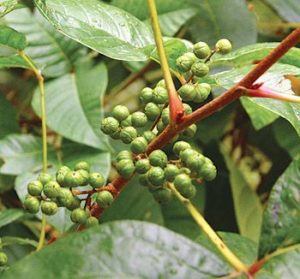 Poison ivy berries are a good source of food for many animals. Birds will eat the berries and spread the seeds through defecation; one reason you may have a problem with poison ivy under your bird feeders. Poison ivy berries are greenish-white and can be seen through the spring and summer.
Poison ivy berries are a good source of food for many animals. Birds will eat the berries and spread the seeds through defecation; one reason you may have a problem with poison ivy under your bird feeders. Poison ivy berries are greenish-white and can be seen through the spring and summer.
One cannot discuss poison ivy with out mentioning the antidote, jewel weed. Touch Me Not is another name for this plant, because the seeds explode out of the pod when touched. If the leaves and stem of jewel weed are crushed and the juices rubbed on your skin, you will not get poison. The juices counteract the poison in poison ivy. Jewel weed flowers can be orange, yellow or spotted and hang from the plant like a jewel on a necklace.
- Jewel Weed Orange Flower
- Jewel Weed Yellow Flower
Poison Sumac is often confused with smooth sumac, staghorn sumac and tree of heaven.
- Poison Sumac
- Non-Poisonous Sumac
- Tree of Heaven
Poison sumac will be found in a wet marshy area while non-poisonous sumac (staghorn and smooth sumac being the most common), and tree of heaven live in poor soil and drier habitats. The leaves of poison sumac are compound, oval, elongated, and smooth-edged, usually 2-4 inches long. The stems are generally red with 7-13 leaves in pairs. Leaves are bright orange in spring, dark green in summer and red-orange in the fall. In comparison, the leaves of non-poisonous sumac are serrated and the leaves of the tree of heaven have a noticeable notch on the lower pairs of leaves at the base. Staghorn sumac branches are also covered with a soft fuzz like the velvet on a stag’s antlers.
- Poison Sumac Berries
- Staghorn Sumac Berries
- Tree of Heaven Samara
Fruits from each of the aforementioned species also provide a means for identification. Poison sumac has white or grayish berries while staghorn sumac has small round, hairy berries in a cone shape. “White mean’s fright, red delight!”, is a saying that helps you remember which plants to stay away from. Why a delight for the staghorn sumac? Those red berries are edible and make a delicious drink when soaked in cold water and the hairs are strained out of the liquid. Add water and honey to taste.
The tree of heaven has samaras which are winged seeds found only in the female tree of heaven and are easy to differentiate from the poison and non-poisonous sumac berries.
Now you can venture into the out of doors with a clear knowledge of the most common poisonous plants to avoid in Pennsylvania. Oh, by the way. Do not touch those hairy poison ivy vines even in the winter or you may develop a case of poison ivy! If you burn poison ivy or poison sumac do not breath in the smoke or let it touch your skin or you may be very sorry!!
DOC November Hike Tree Identification
Want to learn how to identify trees? On Sunday, November 20th come out for a hike with the DOC as we learn the secrets to tree identification. We will hike in and out for a total of 2 miles at an average pace over easy terrain off RT 325 on state game lands. Meet at the Holy Spirit Duncannon Center at 9:00 am. to carpool or alternately at 9:30 am. at the intersection of RT 225 and RT 325 (parking area – 40.38867,-76.94168). Call Paul at 648-8226 or email psmith@duncannonatc.org to register. For precaution purposes wear something orange.
It’s For The Birds
- The brave river goers
- Waiting a turn to load up.
- Docking at West Fairview,
- Shuttle has arrived
This summer the Duncannon Outdoor Club planned a boating trip. Eight brave boaters tackled a very rough Susquehanna River from Marysville to West Fairview. High winds and water nearly swamped us as we headed from Blue Mountain Outfitters to the river left. The ledges and rocks were not visible due to the high water and whitecaps caused by the ever roaring wind. This resulted in one of the canoes capsizing, but other than a sudden dunking everything turned out okay. Once in between the islands the winds were dissipated and we were able to relax a little. All in all everyone had a great time, asking, “Can we do this again?”
- Great White Egret
- Black-Crowned-Night Heron
- Double-Crested Cormorant
When sheltered by the islands, we floated by Wade Island being careful to keep our voices down due to the nesting colonies of the endangered Great White Egrets, Black-Capped-Night Herons and the ever increasing, invading Double-crested Cormorants. Wade Island is a designated Pennsylvania Audubon Important Bird Area and is not open to the public, but can be observed by boat.
Many people are not aware that the Great White Egret is endangered, because they are a common sight in our area. However, there are only two nesting sites in PA. A small colony in York County on the Kiwanis Lake and the largest colony which inhabits Wade Island.
The Black-Crowned-Night Heron is also endangered and more illusive then the Great White Egret. Unfortunately the colonies of both these species have declined and continue to do so due to loss of habitat, water pollution, and nesting site disturbances. Such is the case of the Cormorant colony which has disturbed the nesting site, taking prime nesting spots, and damaging habitat on Wade Island by sheer numbers and nesting habits.
Cormorants used to be rare in this area, but have increased greatly in numbers over the years. It is believed that their increasing numbers are a result of expanding fish hatcheries in the south and a larger number of small fish in the Great Lakes. Cormorants nest high in trees or on the ground of islands. On Wade Island they take prime nesting habitat in trees limiting the sites for the Great White Egret and Black-Crowned-Night Heron. Feces fall in large amounts on those below and kills trees and herbaceous growth on the island. Cormorants also damage the trees when they collect nesting material. This was evident in our trip as we passed the island. This is unfortunate for the Great White Heron and Black-Crowned-Night Heron since they nest only in the trees. When all the trees die, the Cormorants are known to nest on the ground.
In 2006, 2011, 2012 and 2013 a number of Cormorants were culled by marksmen under the direction of the Pennsylvania Game Commission and the U.S Department of Agriculture’s Wildlife Services. The chart below shows the results. Note the decrease in Great White Egrets (red) and Black-Crowned-Night Herons (blue) as the population of Double-Crested Cormorants (green) increased. Gaining Information regarding future culling was attempted from various sources without success.
Some people feel that we should not cull the Cormorants and let Mother Nature take her course. Others disagree believing that mankind made the changes responsible for the increasing number of these birds, and it is mankind who must remediate the results of their actions. What do you think?
A Hike and Spooky Stories!
On Sat., Oct. 15th join the Duncannon Outdoor Club (DOC) for a 2 mile average paced night hike through the wooded cross country trails behind Susquenita High School. The terrain is moderate to easy with a few short climbs. Stop at the abandoned cemetery for some scary stories told by Wilhalmina Dorotheea Roskabower Kaufman. Bring a sit upon if you wish to sit during the story telling. Bring flashlights or headlamps. Meet at the left side of the Susquenita High School Parking lot closest to the building at 7:00 pm. (309 Schoolhouse Rd. Duncannon – along 11/15) Call 395-2462 or email dtakach@duncannonatc.org to register.
National Family Hiking Day
 Saturday, Sept. 24th is National Family Hiking Day. As part of the celebration, the Duncannon Outdoor Club is sponsoring a hike up to Hawk Rock and back for a total of two miles. While ascending the 700 ft. elevation, answer funny riddles that are posted along the way. Families are urged to attend this easy paced hike at one’s own level. Children are urged to attend. Afraid the little ones cannot make it to the top? No problem, take as many breaks as needed. If you feel it’s too hard a climb, turn around, no pressure. The goal is to get out as a family in the great outdoors! Meet at 9:00 am. at the Duncannon Family Health Center. Call Deb at 717-395-2462 or email dtakach@duncannonatc.org to register.
Saturday, Sept. 24th is National Family Hiking Day. As part of the celebration, the Duncannon Outdoor Club is sponsoring a hike up to Hawk Rock and back for a total of two miles. While ascending the 700 ft. elevation, answer funny riddles that are posted along the way. Families are urged to attend this easy paced hike at one’s own level. Children are urged to attend. Afraid the little ones cannot make it to the top? No problem, take as many breaks as needed. If you feel it’s too hard a climb, turn around, no pressure. The goal is to get out as a family in the great outdoors! Meet at 9:00 am. at the Duncannon Family Health Center. Call Deb at 717-395-2462 or email dtakach@duncannonatc.org to register.
Duncannon Outdoor Club Night – Porcupines
 On Sat., Sept. 17th the Duncannon Outdoor Club (DOC) will go on a night hike up Hawk Rock. Hike in and out for a total of two miles over moderate to strenuous terrain at an average pace. At the top take in the view of the lights of Duncannon by the Juniata and Susquehanna Rivers. We will be learning about the elusive creature the porcupine. Meet at 7:00 pm. at the AT trailhead to Hawk Rock. Bring flashlights or headlamps. Call Patrick Walsh at 716-908-3676 or email pjwalsh3@gmail.com to register.
On Sat., Sept. 17th the Duncannon Outdoor Club (DOC) will go on a night hike up Hawk Rock. Hike in and out for a total of two miles over moderate to strenuous terrain at an average pace. At the top take in the view of the lights of Duncannon by the Juniata and Susquehanna Rivers. We will be learning about the elusive creature the porcupine. Meet at 7:00 pm. at the AT trailhead to Hawk Rock. Bring flashlights or headlamps. Call Patrick Walsh at 716-908-3676 or email pjwalsh3@gmail.com to register.
Duncannon Outdoor Club Aug. Hike – Poison Ivy and Poison Sumac
On Sat., Aug. 20th the Duncannon Outdoor Club (DOC) will hike from Scotts Farm to Sherwood Drive and back for a total of 2 miles on easy terrain at an average pace. We will learn how to identify poison sumac and the three forms of poison ivy. Meet at the Duncannon Family Health Center at 9:00 am. or alternately at Scotts Farm at 9:30 am. Call Deb at 717-395-2462 or email dtakach@duncannonatc.org to register.
DOC July 16th Hike at Big Spring State Park – The Wooly Adelgid
On Sat., July 16th the Duncannon Outdoor Club (DOC) will hike two, 1 mile hikes at Big Spring State Park in Blain. Witness the dying giant Hemlocks in the Designated Natural Hemlock Area and then hike to an unfinished railroad tunnel. Both hikes are average paced over moderate to easy terrain. Learn about the Wooly Adelgid and how it is endangering out state tree, the Hemlock. Pack a lunch and bring water. Meet at the Duncannon Family Health Center at 9:00 am. to carpool. Please pay drivers 10 cents per mile for gas (80 miles total). Call Deb at 395-2462 or email dtakach@duncannonatc.org to register.
March DOC Hike to Middle Creek
- The Hikers
- Tundra Swans
- Flying Snow Geese
On March 12th the Duncannon Outdoor Club went to the Middle Creek Wildlife Management Area to witness the migrating Tundra Swans and Snow Geese. Middle Creek Is an important way station providing food and rest for waterfowl flying to northern breeding sites. The warmer weather triggered an earlier migration, so we were lucky to see thousands of Snow Geese. The Tundra Swans were visible only through binoculars, since they had settled down far across the lake.
- Watching people watch the birds.
- Lunch Break!
- A Vernal Pool
After taking pictures and observing the birds and the many people observing them, we headed to the Visitor’s Center to begin our hike along a series of trails. We started at the Conservation Trail to Spicebush Trail, up Valley View Trail, down Horseshoe Trail, to Middle Creek Trail, up Elders Run Trail, back to Conservation Trail to the Visitor’s Center for a total of six plus miles. The two climbs required some effort, but lunch after the first climb re-energized us for further challenges.
We could not believe that horses could traverse down the section of Horseshoe Trail which was nothing more than a narrow, steep, deep ditch down the mountain. Horseshoe tracks confirmed that it was possible. On the Conservation Trail we were lucky to see a vernal pool, a temporary pool of surface water, full of Wood Frog and Jefferson Salamander eggs, an early sign of spring.
As with every DOC event we had an outdoor educational theme. The theme for our event was Snow Geese and Tundra Swans so we had a brief presentation before starting our hike. First we reviewed the four major flyways in North America: the Atlantic Flyway (commonly known as the Kittatinny Ridge in the Harrisburg area), the Mississippi Flyway, the Central Flyway, and the Pacific Flyway.
(Please note that the Kittatinny Ridge is being threatened by development. Refer to Kittatinny Ridge for further information on this topic and to find what you can do to save the ridge.)
- Tundra Swans mate for life.
The Tundra Swans use mostly the Pacific and Atlantic Flyways to reach Northern Canada and the Northern and Western edges of Alaska breeding areas. They leave their wintering areas at their lowest weight relying heavily on way stations like Middle Creek and the lower Susquehanna. When winter approaches, the Tundra Swans east of Point Hope Alaska winter on the Atlantic Coast flying 4,000 miles. Swans south of Point Hope follow the Pacific flyway to their wintering areas along the Pacific Coast.
Tundra Swans have black beaks, faces, and legs. There are small yellow spots in front of their eyes. Holding their necks in a straight position differentiates them from the Mute Swans, a feral or domestic non-native species, which hold their necks in an “S” position.
The Mute Swans are easy to tell apart from Tundra Swans, because they have an orange bill with a black knob at the base. This non-native species is very aggressive, taking and defending a half square mile as its territory. It is a very aggressive bird and will hiss, stare, hit with the wrists of its wings and attack humans. This behavior and a voracious appetite disturbs local ecosystems displacing native species like the Tundra Swan.
Tundra Swans are dabblers used to eating animal matter and nipping off submerged aquatic plants as deep as three feet below the surface. However, due to vanishing wetlands they have begun to feed on agricultural fields. Nipping off the tops of plants and eating seeds left behind after the harvest.
- Nests are built high for better visibility.
- Female Tundra Swans have 3 to 5 cygnets.
Tundra Swans build their nests out of grasses, sedge, mosses, and lichens on the ground in a place providing good visibility. Their territory covers a half square mile, but does not seem to impact the local ecosystem as negatively as the Mute Swans. Tundra Swan babies, called cygnets, are born with their eyes open and are in the water 12 hours after they pip the shell. They are light gray in color, are brooded by the parents for about a week, and are ready to fly after two or three months.


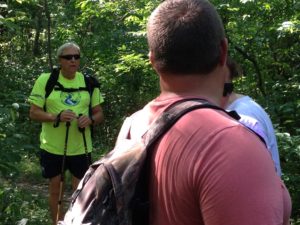
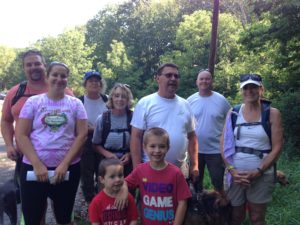
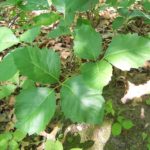
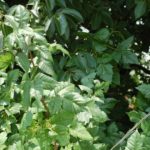
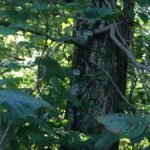
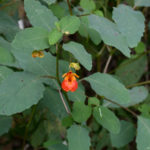
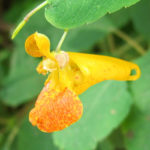

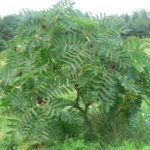
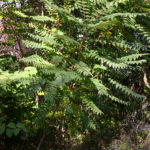
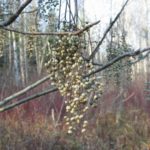
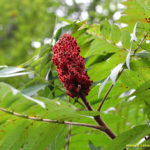
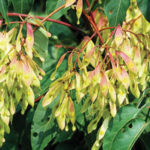
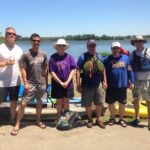
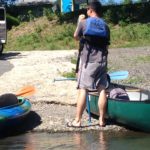
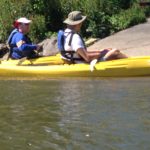
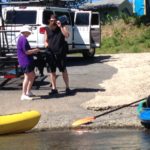

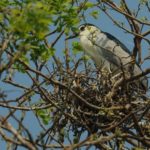
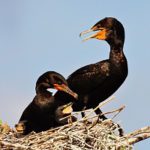
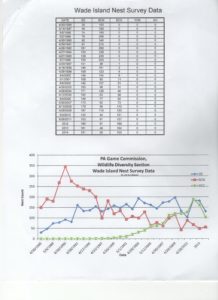
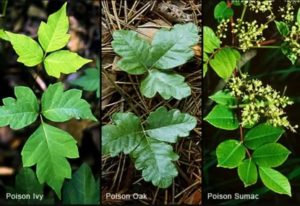
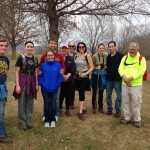
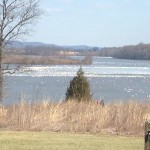

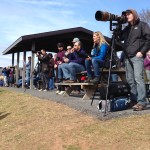

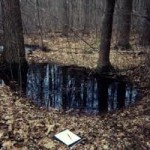
![north-america-migration-flyways[1]](https://duncannonatc.org/wp-content/uploads/2015/12/north-america-migration-flyways1-300x300.jpg)
